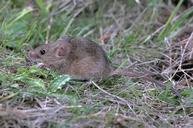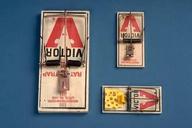Unused stories
Pest of the Month - Mice
Furry little creatures nesting in your kitchen?

How to detect a house mouse infestation:
- Look for droppings, fresh gnaw marks, and tracks, which indicate areas where mice are active.
- Search behind boxes, in drawers, in garages, or around woodpiles for nests made of finely shredded paper or other fibrous material.
- Check for the musky odor associated with mice.
- Mice are most active at night, but you also can see them during daylight hours.
Discourage mice by removing food, water, and shelter and sealing entryways.
- Good housekeeping within buildings reduces shelter and food for house mice.
- Seal all structural cracks and openings larger than 1⁄4 inch. Use wire screen or coarse steel wool that mice can’t chew through.
- Ensure all doors, windows, and screens fit tightly.
- Feed pets only the amount of food they will eat at a single feeding.
- Keep all food storage and garbage containers sealed.
- Thin or remove plants next to or climbing up buildings, since house mice are excellent climbers.
Remove mice from your home by trapping.

- Snap traps and glue boards are the safest and most economical traps.
- Place traps in secluded areas along walls, behind objects, in dark corners, and in places where droppings have been found.
- Dispose of dead rodents by burying or placing them in plastic bags and putting them in the garbage. Don’t touch mice with your bare hands, and wash hands thoroughly after handling traps.
What about poison baits?
- Avoid using baits indoors. Mice can die in hidden places, create bad odors, and be difficult to locate. Seal buildings before baiting outdoors to prevent mice coming indoors to die.
- Baits generally take several days for effective control.
- Place baits in tamper-proof bait stations out of reach of children and pets. All rodent baits are toxic.
Courtesy of UC IPM Quick Tips
